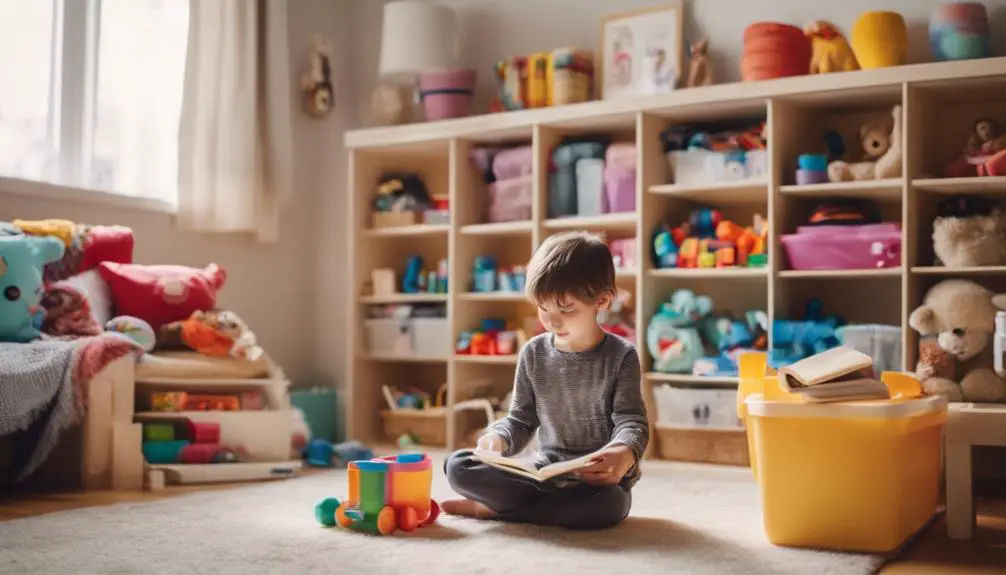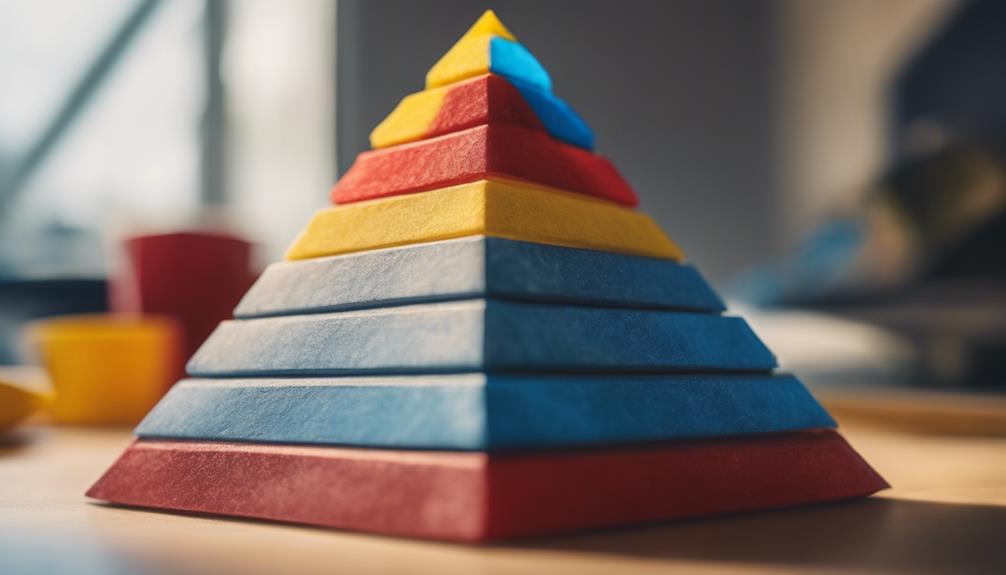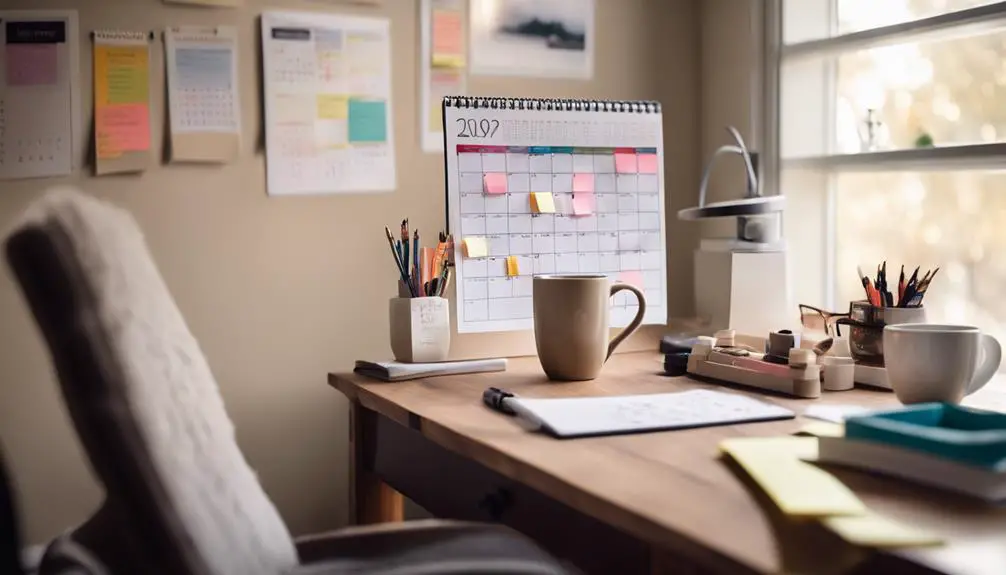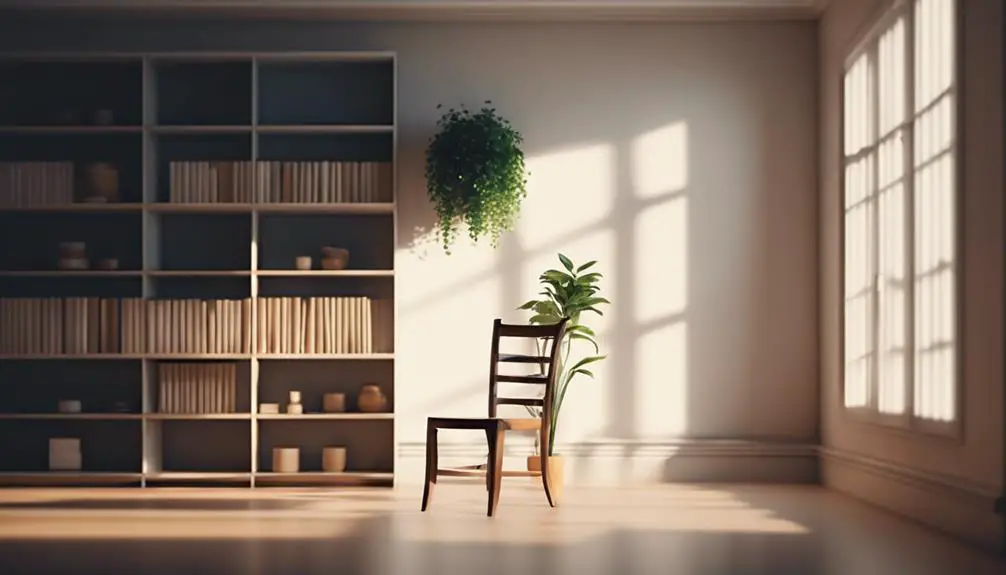Children’s clutter can easily take over your living space, leading to chaos and stress. However, tackling this issue doesn’t have to feel daunting. With a structured approach, you can clear the mess and impart essential organizational skills to your children in the process.
Start by assessing the current situation and establishing clear objectives. It’s important to involve your kids in this journey, as it not only makes the task more manageable but also teaches them ownership and responsibility for their belongings.
Begin by categorizing items—such as toys, clothes, and school supplies—into keep, donate, and discard piles. For instance, you might set up a designated area for toys that are still loved and used, while encouraging your kids to part with items they no longer play with. This not only creates space but also fosters a sense of decision-making in them.
When organizing, opt for storage solutions that are visually appealing and functional, such as colorful bins or labeled boxes. This can make the process more enjoyable for your children. For example, using clear containers allows kids to see what’s inside, which can encourage them to put things back in their proper places.
Establish a regular decluttering routine—perhaps monthly or seasonally—to keep the organization in check. This practice can help instill a sense of discipline and routine in your children, ensuring that clutter doesn’t build up again.
By creating a fun and engaging environment around decluttering, you can transform what may seem like a chore into an empowering experience for your children, leading to a more organized home for everyone.
Assess the Current Situation
To effectively address children’s clutter, it’s essential to assess the existing situation thoroughly.
Begin by examining the playroom, bedroom, or any area where mess has built up. Take note of the various types of clutter present—items like broken toys, clothes that no longer fit, art supplies scattered about, and miscellaneous objects that lack a designated space. This evaluation goes beyond mere visibility; it involves recognizing the emotional attachments your children may have to certain items.
Engage your child in conversation about which items they genuinely cherish and wish to retain. You may find their preferences surprising, as some items may hold special memories or symbolize important moments in their lives. Acknowledging these emotional connections fosters an atmosphere of respect and understanding, making the decluttering process more manageable for everyone involved.
After identifying the types of clutter and understanding the emotional significance, you can make informed decisions about what to keep, donate, or discard.
This crucial step lays the groundwork for a more organized environment, enabling both you and your children to experience a sense of freedom and calm. The ultimate aim is to cultivate a space that encourages creativity and play, free from the burden of excess belongings.
Set Clear Goals
After evaluating the current clutter situation, it’s essential to establish specific goals for what you aim to accomplish. Consider the sense of relief that comes with an organized space.
Begin by pinpointing particular areas that suffer from clutter, such as the playroom or bedroom. For effective goal setting, break these spaces down into smaller, achievable tasks.
Instead of a vague goal like “I want a clean room,” try something more defined, such as “I want to categorize toys into keep, donate, and toss groups.” This level of specificity keeps you focused on the task at hand. Document these goals and create visual reminders to boost your motivation. Options include colorful charts or checklists that display your progress.
Involving your children in this process can enhance the experience; they can contribute their own goals, turning it into a fun, collaborative project. Having these goals visible makes it easier to maintain your focus.
The clearer you’re in your objectives, the more liberating it will feel to have a clutter-free environment. Gather some paper and start outlining those goals, and you’ll be one step closer to achieving a calm, organized home!
Involve Your Children
Involving your children in the decluttering process not only enhances its effectiveness but also adds an element of enjoyment. Engaging them helps foster a sense of ownership and responsibility towards their space.
Start by communicating clearly about the importance of decluttering. Explain how it can create a more organized and freeing environment. Encourage an open discussion, allowing them to share their thoughts and feelings about their belongings.
Use positive reinforcement to motivate their involvement. Celebrate small achievements together, whether it’s sorting through a drawer or deciding what items can be donated. Acknowledging their contributions empowers them and makes the process feel rewarding.
Frame decluttering as a collaborative effort, highlighting the significance of their input. Invite them to help categorize items into keep, donate, or toss. This approach not only teaches them valuable decision-making skills but also ensures they feel respected and valued throughout the process.
Choose a Decluttering Method
When it comes to managing kids’ clutter, selecting an appropriate decluttering method is crucial. Investigating various popular techniques that align with your family’s lifestyle can lead to a more organized environment. It’s essential to consider age-appropriate strategies so that the process remains engaging for the children.
For instance, the KonMari method emphasizes keeping only items that “spark joy,” which can be adapted for kids by encouraging them to reflect on their favorite toys and books. Another effective approach is the Four-Box Method, which involves sorting belongings into four categories: Keep, Donate, Trash, and Relocate. This method promotes decision-making skills and helps children understand the value of their possessions while fostering a sense of responsibility.
Creating a fun atmosphere during decluttering can make the task feel less daunting. You might play upbeat music or set a timer for a decluttering challenge, turning it into a game.
Moreover, establishing a regular decluttering routine, such as seasonal cleanouts, can help maintain order over time. Utilizing storage solutions like labeled bins or colorful baskets can also make organizing easier and more visually appealing for kids.
Popular Decluttering Techniques
Selecting a decluttering method can be daunting, especially with children’s toys and belongings scattered throughout your home. Adopting a minimalist approach allows you to concentrate on what is genuinely important, making it easier to part with items that carry emotional weight. Involving your children in the decluttering process promotes a sense of ownership and responsibility.
Here’s a table outlining popular decluttering techniques:
| Technique | Description |
|---|---|
| Creative Storage | Utilize innovative bins and shelves to optimize your space. |
| Visual Organization | Organize items in a manner that is easy to view and access. |
| Reward Systems | Set up a rewards system for children who assist in decluttering. |
| Seasonal Reviews | Evaluate your belongings at the change of each season to determine what to keep. |
| Digital Decluttering | Sort and manage your digital files to reduce mental clutter. |
Consider adopting sustainable decluttering practices that promote recycling and donating through local community resources. This approach not only clears your space but also supports others in need. Implementing these techniques will help you cultivate a more organized environment that encourages creativity and freedom, making it more enjoyable for everyone in your household.
Age-Appropriate Strategies
Children of varying ages respond more effectively to different methods of decluttering, so adjusting your strategy can lead to better outcomes.
For toddlers, simplicity is key. Utilize colorful bins to sort toys that are suitable for their age, making it easier for them to grasp where items should go. Engage them in the process by saying, “Let’s put the blocks in the blue bin!” This approach not only reduces clutter but also instills a sense of responsibility in them.
As children grow older, they develop a greater sense of ownership over their items. It’s beneficial to involve them in the decision-making process by asking which toys they still enjoy playing with. Establish a system that includes categories like “keep,” “donate,” and “recycle,” empowering them to take charge of their possessions.
For tweens and teens, clutter can have a more significant impact on their living spaces. Encourage them to evaluate their belongings by considering which items truly bring them happiness or serve a practical purpose. Suggest a digital decluttering session where they can organize their files or photos, which can be a valuable skill for their future.
Regardless of the age group, the main objective is to help them regain control over their space. Creating an environment free from excessive clutter allows them to thrive and fosters a sense of freedom.
Sort Items by Category
Sorting items by category is an effective strategy for managing children’s clutter. Organizing belongings into specific groups creates a sense of order, making chaotic spaces more manageable. Begin by separating toys, books, art supplies, and clothing. This method not only provides a clear overview of what’s present but also emphasizes the significance of each category in your child’s life.
When you categorize items, you help children understand where things should be stored, which encourages their independence and responsibility. Involve them in the process; after all, they’re the ones who use these items. Encourage them to select their favorite items from each group, making the sorting experience more engaging and personal.
As you organize, keep an eye out for duplicates or items that haven’t been used in a while. This can reveal what your child truly enjoys and frequently uses, which will aid in future decisions about what to keep or discard. Focusing on categories streamlines decluttering and simplifies maintaining a tidy environment.
This effort isn’t solely about cleaning; it’s about fostering a space where children can thrive and explore their creativity without the distraction of excess clutter.
For example, you might find that your child has several stuffed animals but only plays with a few favorites. Consider donating the duplicates to a local charity, which not only clears space but also teaches your child about sharing and giving to others in need.
Create Keep, Donate, and Discard Piles
When decluttering, it’s important to set up three distinct piles: keep, donate, and discard. This organized sorting method helps clarify what’s truly meaningful in your space.
Begin with the items you’ve already identified. As you assess each piece, consider whether it brings joy or serves a purpose in your life.
For the keep pile, concentrate on items your children actively use or cherish—those that evoke happiness and excitement. For instance, a favorite stuffed animal or a beloved book should find a place here.
In the donate pile, include items that are still in good condition but no longer hold significance for your family. Donating these toys or clothes can give them a second life, while also creating space for the things that matter most to you.
The discard pile plays a vital role in this process. It should contain items that are broken, worn out, or simply no longer useful. Letting go of things to which you may feel attached can be challenging, yet it offers a sense of liberation.
This act of releasing clutter not only clears physical space but also paves the way for new memories and experiences. Embrace this process as a way to create a more joyful and organized life, making room for what truly enhances your everyday experiences.
Tackle One Area at a Time
To make the task of clearing clutter easier, select a specific area to concentrate on first, such as a toy box or a closet. Setting a timer can help you stay focused and prevent the task from becoming too daunting. Addressing one section at a time allows you to observe progress, which can boost your motivation.
Focusing on a particular zone offers a sense of accomplishment and makes the overall process less intimidating. For instance, if you start with a toy box, take everything out, sort through the items, and decide what to keep, donate, or discard. This approach not only organizes your space but also helps you feel more in control of your environment.
Using a timer can be beneficial; for example, set it for 15 or 30 minutes. This will create a sense of urgency and help you concentrate on the task without feeling overwhelmed. Once the timer goes off, you can take a short break or continue if you’re feeling productive.
Choose a Specific Zone
Children’s rooms frequently turn into a jumble of toys, clothing, and art supplies, making it challenging to know where to begin decluttering. To take back control, select a specific area to focus on first. This strategy allows you to concentrate on one section at a time, reducing feelings of being overwhelmed and making the task more manageable.
Start by pinpointing clutter hotspots in your child’s room. This could be the toy corner, the closet, or the crafting table. Once you’ve identified the area, make it your initial target. Focusing on this single space gives you the opportunity to thoroughly tackle the clutter without feeling scattered.
Clear everything out of the chosen area and categorize the items into three groups: keep, donate, and toss. This sorting method not only clears the space but also teaches your child the value of maintaining an organized environment.
After decluttering one area, take a moment to appreciate the progress you’ve made. This sense of achievement can motivate you to keep going. Each zone you successfully clear brings you closer to a more organized and serene space for your child.
For example, if you choose the toy corner, consider using storage bins with labels to help your child learn where to put things back after playtime. This not only keeps the area tidy but also encourages responsibility.
Set a Timer
Setting a timer can make the decluttering process more focused and less daunting. When you designate a specific time to work on one area, it becomes easier to commit and maintain motivation. This method enhances time management while incorporating effective focus strategies.
Here are three steps to enhance your decluttering session:
- Choose a Duration: Set your timer for 15, 20, or 30 minutes—whatever feels comfortable for you. Short intervals keep your energy high and your mind alert.
- Focus on One Area: Concentrate solely on the selected space. Whether it’s a toy box or a closet, resist the temptation to switch tasks. This focus helps prevent feelings of being overwhelmed.
- Acknowledge Your Achievements: When the timer rings, take a moment to recognize what you have completed. This acknowledgment reinforces the positive feelings linked to decluttering and motivates you to continue.
Establish a System for Toys
Establishing a toy organization system can significantly reduce clutter in your home and create a more peaceful environment. Implementing toy rotation along with smart storage solutions can enhance your living space’s functionality. Here’s a straightforward plan to get started:
| Step | Action |
|---|---|
| Assess Your Toys | Gather all toys and take stock of their condition and how often they are used. This helps identify which toys are worth keeping and which are no longer needed. |
| Sort and Categorize | Divide the toys into three groups: Keep, Donate, and Trash. This process not only clears out unwanted items but also teaches children about sharing and responsibility. |
| Implement Toy Rotation | Change the toys available for play every few weeks. This keeps children engaged and interested while minimizing mess. For example, if you have a box of building blocks, set them out for a month and then swap them with a box of puzzles. |
| Choose Storage Solutions | Utilize baskets, bins, or shelves to neatly organize toys. Clear storage bins are particularly effective as they allow visibility while keeping toys organized. For instance, labeling bins by toy type can help children learn to put toys away correctly. |
Creating an effective toy organization system not only makes your space tidier but also enhances playtime for children, fostering creativity and learning.
Organize Clothes Effectively
Once you’ve managed the toy chaos, the next step is organizing your children’s clothing. A tidy wardrobe fosters independence, allowing kids to select their outfits with ease. Implementing a seasonal rotation system is an effective strategy. This involves storing away clothes that aren’t in season, which helps prevent clutter from building up.
To begin this process:
- Sort and Purge: Involve your children in reviewing their clothes. Keep items that fit well and are favorites, while setting aside a donation pile for pieces that are no longer worn. This not only creates space but teaches kids about making choices and letting go of things they don’t need.
- Create a Wishlist: Motivate your kids to maintain a clothing wishlist. This practice helps them clarify their preferences and needs, ensuring that future purchases are intentional and satisfy their style.
- Utilize Clear Storage Solutions: Consider investing in clear bins or drawer organizers. Label these containers by season or clothing type, such as shirts and pants. This organization method allows children to quickly find what they need, promoting self-sufficiency in getting dressed.
Organizing your children’s clothes not only streamlines their daily routine but also instills valuable skills in decision-making and responsibility.
Manage School Supplies
Managing school supplies can significantly enhance your child’s academic experience. Effective organization of these materials contributes to a stress-free environment that encourages creativity and learning. Begin with innovative storage solutions, such as vibrant bins or labeled drawer organizers, to keep everything orderly.
To visualize your objectives, refer to the following table:
| Action | Benefit |
|---|---|
| Seasonal Cleanouts | Reduces clutter effectively |
| Supply Rotation | Ensures access to fresh materials |
| Educational Tools | Enhances learning opportunities |
Involve your child in seasonal cleanouts, guiding them to sort through their craft materials and educational tools. This practice teaches them responsibility while giving them the freedom to decide what to keep or discard, fostering independence.
Establish a regular routine for supply rotation. Replace old items with new ones as necessary to maintain an organized space. When supplies are well-managed, the environment becomes conducive to focus and creativity. Your child will flourish in a setting where everything is in its designated place, enabling them to explore their interests without the hindrance of disorganization.
Consider using clear storage containers for easy visibility or color-coded labels to help your child recognize different categories of supplies. These practical choices not only simplify finding items but also make tidying up more engaging.
Create a Memory Box
A memory box is a fantastic way to cherish and organize your child’s most cherished keepsakes. This special container allows you to preserve meaningful moments and memories without becoming overwhelmed by clutter.
Creating a memory box empowers your child to hold onto what’s truly significant to them.
Here are some excellent ideas for filling your memory box:
1. Artwork: Gather your child’s drawings and paintings. This collection can include everything from finger paintings to school projects, showcasing their creativity and artistic growth over the years.
Consider using a large folder or portfolio to keep the artwork flat and protected.
2. Milestone Items: Keep items that mark important milestones, such as their first pair of shoes, baby teeth, or favorite toys. These sentimental objects can evoke fond memories of their early years and development.
You might even label each item with the date and a brief description for added context.
3. Letters and Cards: Add birthday cards, notes from friends, or letters you’ve written to your child. This personal touch creates a deeper connection and allows for reflection in the future.
Consider using decorative stationery or a scrapbook to organize these letters beautifully.
Creating a memory box not only helps in organizing sentimental items but also fosters a sense of identity and belonging for your child.
It becomes a treasure trove of memories that they can revisit as they grow older.
Implement Storage Solutions
To manage children’s clutter effectively, selecting appropriate containers that suit your space and meet your child’s requirements is crucial.
Clear labeling plays a vital role, ensuring that everyone understands where items belong and can locate what they need effortlessly.
For instance, using colorful bins for toys and easy-to-read labels can make organization appealing and functional.
Implementing these straightforward strategies will foster an organized environment, motivating your kids to maintain tidiness.
Choose Appropriate Containers
When it comes to organizing kids’ clutter, selecting the right containers is crucial. The appropriate types of containers not only maintain order but also enable children to locate and return their belongings with ease. Here are three effective strategies for choosing the best storage solutions:
1. Diversify Container Types: Incorporate a range of containers such as bins, baskets, and decorative boxes. This variety not only enhances the aesthetic appeal of a room but also accommodates different types of items.
For instance, large, sturdy bins can store bulky toys, while woven baskets can hold smaller items like arts and crafts supplies.
2. Opt for Various Sizes: Select containers in different sizes to cater to a range of items, from toys to books.
For example, oversized bins are ideal for larger toys like stuffed animals, whereas smaller boxes can effectively organize tiny action figures or building blocks. This ensures that every item has a designated spot, making cleanup simpler.
3. Utilize Color Coding and Easy Access Features: Implementing color coding can help children quickly recognize where items belong, streamlining the organization process.
For instance, you could use blue bins for books and red baskets for toys. Additionally, choose containers with features that promote accessibility, such as lids that are easy for kids to open. This encourages them to take responsibility for their belongings and fosters independence.
Label Everything Clearly
Labeling everything clearly is crucial for maintaining an organized environment, as it helps both children and parents understand where items belong. When you establish effective labeling systems, you enable your children to take ownership of their belongings.
Start by selecting storage containers that complement your space, and then create labels that are clear and engaging.
Color coding offers a visually appealing and easy-to-follow approach to organization. For example, assign different colors to various categories of toys: red for blocks, blue for cars, and green for art supplies. This not only adds a playful element but also simplifies the cleanup process, allowing children to quickly locate where items should be returned.
Involving your children in the labeling process can enhance their sense of ownership. Encourage them to help create the labels or select colors. This involvement fosters pride in their organized environment.
The goal is to develop a system that’s both functional and enjoyable, promoting independence among children. With clear labels and a touch of creativity, you can transform a cluttered space into a harmonious haven for your family.
Maintain an Organized Space
Maintaining an organized space can seem daunting, but with consistent effort, you can create an environment that’s both tidy and functional. Embracing space organization and preventing clutter can lead to a sense of freedom associated with minimalist living.
Involving your family in organizing routines promotes time management skills and helps children learn about mindful consumption and sustainable practices.
Here are three effective strategies to help you maintain an organized space:
- Creative Storage Solutions: Utilize baskets, bins, and shelving units to enhance visual organization. This approach makes it easier for children to locate their belongings while ensuring everything stays in its designated place. For instance, consider using labeled bins for toys or books to encourage kids to tidy up after themselves.
- Daily Clean-Up Routines: Dedicate a few minutes each day for everyone to tidy up. This practice engages children in maintaining their space and teaches them responsibility. Over time, these short sessions will become less intimidating and instill a sense of accomplishment in keeping their environment neat.
- Regular Space Assessment: Take a moment each week to evaluate the organization of your space. Identify which systems are effective and which need adjustment. This routine not only helps prevent clutter from accumulating but also ensures that your environment continues to meet your family’s evolving needs.
Encourage Regular Decluttering
To keep clutter under control, establish a regular decluttering schedule with your kids. Make it enjoyable by transforming it into a game or a family challenge. This approach not only helps maintain a tidy space but also fosters a routine that everyone looks forward to.
For instance, you could set a timer for 15 minutes and see how many items each person can find to donate or throw away. You might also consider using colorful bins or bags to make sorting items more engaging.
Involving your children in this process teaches them valuable organization skills and the importance of letting go of things they no longer need. This way, decluttering becomes a shared activity that strengthens family bonds while promoting a more organized home.
Set Decluttering Schedule
Creating a decluttering schedule can significantly improve how you manage clutter, especially when it comes to kids’ belongings. Regular decluttering sessions not only help maintain a tidy environment but also encourage the entire family to participate.
This teamwork teaches children about responsibility and ownership of their items, which can foster a sense of independence. Introducing rewards for decluttering can also boost motivation for everyone involved.
Here are three straightforward steps to establish your decluttering schedule:
- Decide on Frequency: Determine how often your family will declutter. Options include weekly, bi-weekly, or monthly sessions. Choose the frequency that best fits your family’s routine.
- Select Specific Days: Assign particular days on your calendar dedicated to decluttering. Consistency is important for forming a habit. For instance, you might choose Saturday mornings after breakfast or Wednesday evenings.
- Create a Fun Ritual: Transform decluttering into an enjoyable family activity. Play upbeat music, offer snacks, or set a timer to add a sense of urgency and fun to the process.
Implementing these steps can make decluttering a more manageable and enjoyable task for the entire family, leading to a more organized home.
Make It Fun
Making decluttering a fun experience can encourage your kids to participate in regular clean-ups. Start with clutter games where everyone competes to see who can gather the most items within a time limit. To make it even more exciting, offer fun rewards for their efforts, such as extra screen time or a special treat.
Create imaginative challenges to keep things interesting. For instance, host themed decluttering sessions like “All Things Red” or “Toy Treasure Hunt,” where kids hunt for specific items. These activities transform a chore into an engaging adventure.
Incorporating music can also enhance the experience. Play their favorite songs while decluttering—dancing and tidying up together can create a lively atmosphere.
Consider introducing silly competitions, such as who can craft the most ridiculous art project using recyclable items they no longer want.
Participating in these family activities promotes teamwork and a sense of responsibility while keeping clutter under control. The more enjoyable you make it, the more likely your kids will view regular decluttering as a normal part of their routine.
Teach Kids Responsibility
Teaching kids responsibility is crucial for helping them manage their belongings and develop essential life skills. When children take charge of their items, they cultivate a sense of ownership and accountability that supports their growth. Here are several effective strategies to guide them on this important journey:
- Set Clear Expectations: It’s vital for children to understand what you expect from them regarding their belongings. Clearly outline specific tasks, such as putting toys away after playtime or keeping their room tidy. This clarity helps them know exactly what they need to do.
- Introduce Responsibility Rewards: Recognizing and celebrating their efforts with small rewards can motivate children to complete their tasks. For example, you might give them a sticker for every week they keep their room organized. This positive reinforcement shows them that being responsible can lead to enjoyable outcomes.
- Encourage Understanding of Consequences: Teach children that neglecting their belongings can result in natural consequences. For instance, if they leave their bicycle outside during rain, it may get damaged. Helping them connect their actions to the results fosters a deeper understanding of responsibility.
By implementing these strategies, you can effectively guide your children toward becoming more responsible individuals.
It’s important to remember that this process takes time and patience, but the skills they gain will benefit them throughout their lives.
Celebrate Successes Together
Recognizing and celebrating your child’s achievements in managing their belongings reinforces their sense of responsibility and encourages them to maintain good habits. When your child organizes their room or declutters their toys, take a moment to acknowledge their effort. A simple “Great job!” or “I’m proud of you!” can have a significant impact.
Consider introducing family rewards as an additional motivation. For example, after a week of successful decluttering, treat the whole family to a fun outing or a special dessert. This approach not only rewards your child but also strengthens family connections.
Use positive reinforcement to highlight their accomplishments. Create a visual chart for tracking progress, and celebrate milestones together. This practice encourages your child to take ownership of their space and promotes independence.
Make decluttering a family activity; when everyone participates, it transforms from a chore into a shared experience. Celebrate small victories, such as completing a task or keeping a clean space for a few days.
These moments of recognition inspire your child to continue developing good habits, ensuring they enjoy a clutter-free environment.
Reevaluate Periodically
Reevaluating your child’s belongings regularly is crucial for keeping their space organized and free of clutter. Adopting a minimalist approach can help both you and your child understand the significance of what truly matters.
Conducting a seasonal review provides an opportunity to evaluate their items and determine what to keep and what to discard. Here are three steps to assist you in this process:
- Establish a Routine: Select a specific time each season to go through belongings together. Creating this routine helps make the process a natural part of your family’s schedule.
- Engage Your Child: Involve your child in the sorting process. Encourage them to select their favorite items and share the reasons behind their choices. This involvement empowers them and enhances their decision-making abilities.
- Set Up a Donation Box: Introduce a donation box for items that your child no longer uses. This practice not only promotes generosity but also teaches them the importance of letting go of things they no longer need.
Conclusion
In the process of clearing clutter, envision it as cultivating a garden. Each item you sort represents a seed, and as you guide your children in making choices, you’re fostering a sense of responsibility and organization. Celebrating small achievements acts like watering those seeds, supporting their growth into lifelong habits. Regularly revisit this garden to remove the weeds of excess, creating room for new development. Together, you will create a lively environment where creativity and joy can thrive, transforming disorder into an inviting landscape.
Establishing this practice is essential because it teaches kids the valuable skill of managing their belongings and maintaining an organized space. For instance, you can set aside a specific time each week for decluttering. Use bins or baskets labeled for different categories like toys, books, and clothes, making it easier for kids to sort their items. Consider using a timer to create a fun challenge, encouraging them to beat the clock while putting things back in order.
This hands-on approach not only alleviates clutter but also instills a sense of accomplishment in children. As they see the fruits of their labor—a tidy room—they learn the importance of responsibility and the satisfaction that comes from maintaining an organized space. Include them in discussions about what to keep, donate, or discard, reinforcing their ability to make decisions. This way, they become more invested in the outcome and are likely to continue these habits in the future.















